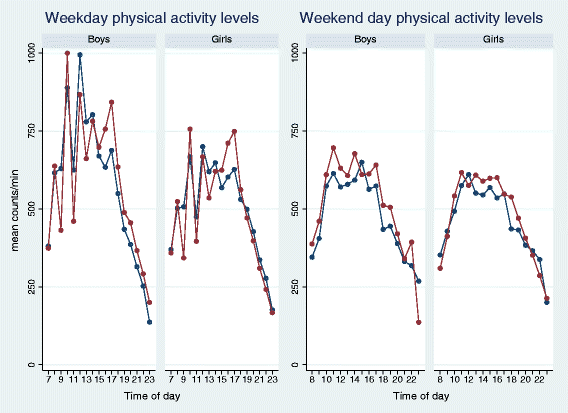Do extra compulsory physical education lessons mean more physically active children--findings from the childhood health, activity, and motor performance school study Denmark (The CHAMPS-study DK)
- PMID: 25248973
- PMCID: PMC4180151
- DOI: 10.1186/s12966-014-0121-0
Do extra compulsory physical education lessons mean more physically active children--findings from the childhood health, activity, and motor performance school study Denmark (The CHAMPS-study DK)
Abstract
Background: Primarily, this study aims to examine whether children attending sports schools are more active than their counterpart attending normal schools. Secondary, the study aims to examine if physical activity (PA) levels in specific domains differ across school types. Finally, potential modifications by status of overweight/obesity and poor cardio-respiratory fitness are examined.
Methods: Participants were from the first part of the CHAMPS-study DK, which included approximately 1200 children attending the 0th - 6th grade. At the sports schools, the mandatory physical education (PE) program was increased from 2 to 6 weekly lessons over a 3-year period. Children attending normal schools were offered the standard 2 PE lessons. PA was assessed at two different occasions with the GT3X ActiGraph accelerometer, once during winter in 2009/10 and once during summer/fall in 2010. Leisure time organized sports participation was quantified by SMS track. Based on baseline values in 2008, we generated a high-BMI and a low-cardio-respiratory fitness for age and sex group variable.
Results: There were no significant differences in PA levels during total time, PE, or recess between children attending sports schools and normal schools, respectively. However, children, especially boys, attending sports schools were more active during school time than children attending normal schools (girls: β=51, p=0.065; boys: β=113, p<0.001). However, in the leisure time during weekdays children who attended sports schools were less active (girls: β=-41, p=0.004; boys: β=-72, p<0.001) and less involved in leisure time organized sports participation (girls: β=-0.4, p=0.016; boys: β=-0.2, p=0.236) than children who attended normal schools. Examination of modification by baseline status of overweight/obesity and low cardio-respiratory fitness indicated that during PE low fit girls in particular were more active at sports schools.
Conclusion: No differences were revealed in overall PA levels between children attending sports schools and normal schools. Sports schools children were more active than normal schools children during school time, but less active during leisure time. In girls, less organized sports participation at least partly explained the observed differences in PA levels during leisure time across school types. Baseline status of cardio-respiratory fitness modified school type differences in PA levels during PE in girls.
Figures
References
-
- WHO . Global health risks: mortality and burden of disease attributable to selected major risks. Geneva: World Health Organization; 2009.
Publication types
MeSH terms
LinkOut - more resources
Full Text Sources
Other Literature Sources
Medical


